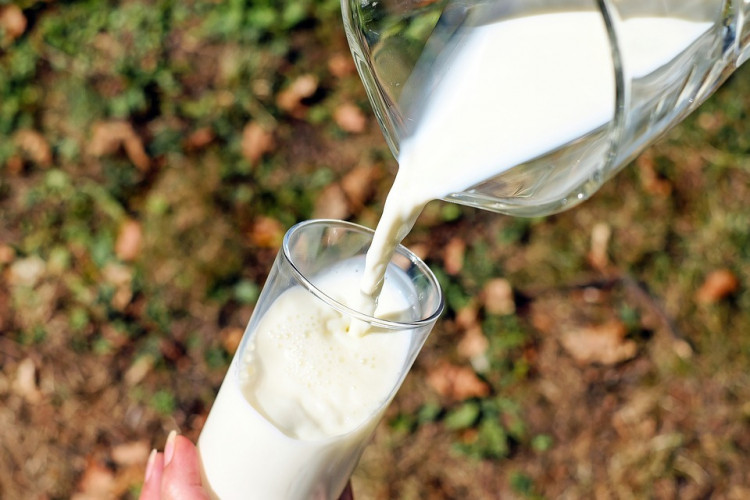The list of milk alternatives is becoming popular, which include oat, hemp, quinoa, rice, almond, and soy milk. The worldwide market of these alternatives is about US$10.6 billion in 2016, and it is expected to increase by 17 percent in 2024, according to Grandview Research, a US-based company.
But, which should you choose among these if you are planning to opt for a dairy-free morning bowl of cereal? Two nutritionists based in Hong Kong explained the issues of each of these milk alternatives and advised how to pick the right one.
According to Melanie Moran, a recent graduate from the Institute for Integrative Nutrition in New York, an online school, and works as a nutritionist in Hong Kong, people need to stop thinking that drinking milk is not the only way to make sure their diet could have sufficient amounts of calcium.
The National Institutes of Health suggests adults aged between 19 to 50 should consume a minimum of 1,000 milligrams of calcium daily. As per South China Morning Post, those who lack calcium may increase their risk of osteoporosis (bone disease) over time.
"Many other food sources boast high levels of bioavailable calcium including some leafy greens, [tinned] sardines and anchovies and carrots," says Moran. "We do not need milk for healthy bones. It is perfect if you're a calf. The reality is that dairy has the opposite undesired effect on bone health. It causes unwanted acidity, meaning the body has to compensate by drawing minerals from the bones."
But, a recent study published in the National Centre for Biotechnology Information in the United States discovered insufficient scientific research to confirm the hypothesis of acidosis induced by milk.
As per Moran, unpasteurized dairy milk is the healthiest form of milk. However, it has been demonized by several elements of the "healthy eating" community as it contains bacteria. The US Food and Drug Administration explained pasteurizing milk is a method to remove harmful bacteria like listeria, salmonella, as well as E. coli.
The commercial dairy industry is the problem, Moran noted. This industry is raising cows in an unsanitary environment, pumps them full of antibiotics and growth hormones, and artificially inseminates them to keep them lactating and boost milk yield.
Meanwhile, Chrissy Denton, a Hong Kong-based nutritionist who has a master's degree in nutrition from Massey University in New Zealand, says some people are lactose intolerant - their body does not produce enough of enzyme necessary to break down lactose.
Those who consume dairy products but are lactose intolerant can suffer respiratory problems, skin problems such as acne, bloating, and digestive issues. These symptoms could be alleviated when they remove dairy on their diet. As per scientists, lactose intolerance could get worse as people age. This is mainly because their stomachs are less able to break down lactose.
The most commonly sold milk alternative on the market today is made from soy, which is grown throughout East Asia. However, much like dairy farms, the soybean industry has come under fire for a variety of environmental and health factors associated with mass production of the plant for commercial purposes, including the use of pesticides.
Another new dairy alternative that hits the market is the hemp milk. According to Moran, this alternative is a good source of bioavailable calcium and is also "chock full" of vitamins, including vitamins A, B, E and D and crucial minerals like potassium, magnesium, and zinc. Still, there are only a few people who are consuming hemp milk because of lack of knowledge.
"When some people hear the word hemp they may be concerned it contains THC associated with recreational marijuana. Needless to say, these fears are unfounded," Moran said.
Quinoa milk, on the other hand, is also a good alternative. This is particularly good for people who have gone gluten-free because their body can't process, or has an immune reaction to, wheat proteins since it is high in of protein, Denton said. But, she also noted to check the label of quinoa milk before buying the product.
"Quinoa milk usually only contains around five to 10 percent quinoa with a higher water content, which means the fiber and vitamins and minerals are more diluted," she says.
Lastly, oat milk is becoming more popular due to its "lactose-free, vegan, immune boosting properties." Moran notes some studies assert drinking oat milk could help lower LDL or bad, cholesterol due to the beneficial effects of beta-glucans.
"Oat milk is theoretically easy to make at home by soaking and blending oats in a blender then straining through a nut bag," she adds. But, as with quinoa and hemp milk, there are drawbacks; such milk alternatives are often fortified with synthetic calcium.






